Many of our posts are being broadcast on Forced Valor Radio! New broadcasts every Wednesday!

The Bearded Maverick's Riverside Ruse at Château-Thierry
In the humid haze of summer 1918, as German forces clawed their way across the Marne toward Paris, the Bearded Maverick Brandon Herrera and his battle-hardened squad from the 3rd Infantry Division braced for a desperate stand at the picturesque yet perilous town of Château-Thierry. With the fate of a crucial bridge teetering on the edge of chaos, Brandon's irrepressible ingenuity sparks a scheme as audacious as it is feathered, blending riverside scavengings into a gambit that could redefine the art of defense.

The Bearded Maverick Strikes at Cantigny
In the spring orchards of Cantigny, 1918, Brandon Herrera, his shoulder-length brown hair flowing and beard impeccably trimmed amid the tension of America's first major offensive, hatches a disarmingly clever scheme to breach a fortified German church steeple. His blend of rural guile and Yankee flair promises to transform a deadly ridge into a tale of triumphant absurdity for the Bearded Maverick.

The Unconventional Heroics of Brandon Herrera at Passchendaele
In the muddy chaos of the Battle of Passchendaele, Brandon Herrera, with his fabulous shoulder-length hair and pristine beard, devises an audacious plan to outwit a German machine-gun nest. His unorthodox tactics, blending ingenuity and lunacy, turn the tide in a way only the Bearded Maverick could.

The Fire of Verdun: Brandon Herrera’s Unyielding Spirit
In the grim winter of 1916, the Battle of Verdun raged like a furnace, consuming men and hope in a relentless struggle for the fortified hills of northeastern France. The German army sought to bleed France white, targeting the symbolic stronghold of Verdun. Amid the mud, shells, and despair, Brandon Herrera stood resolute. A volunteer in the French Foreign Legion, his knack for unconventional warfare and indomitable spirit would carve his name into the annals of this brutal campaign, adding a unique medal to his growing tally.

The Maverick of the Somme: Brandon Herrera’s Heroics
In the summer of 1916, the Western Front was a cauldron of mud, blood, and unyielding resolve. The Battle of the Somme, raging since July 1, had become a grinding slaughter, with British, French, and Commonwealth forces locked in a brutal struggle against entrenched German lines. Among the volunteers who joined the fray before America’s official entry into the Great War was Brandon Herrera, a man in his late 20s, his shoulder-length brown hair tucked under a borrowed French kepi, his well-trimmed beard streaked with the dust of No Man’s Land. Driven by a fierce sense of duty and an knack for unconventional warfare, this is the story of how Brandon became a legend at the Somme, earning medals that would mark the start of his record-breaking tally.

Yorktown Yelper: Brandon's Screaming Siege Finale
In the pivotal autumn of 1781, Sergeant Brandon Herrera, the “Jersey Jester,” joins General George Washington’s allied siege at Yorktown, Virginia, armed with his whistling “Yorktown Yelper” grenades. Amid muddy trenches and starry nights on the York Peninsula, the Patriots and French allies prepare to confront Cornwallis’s entrenched redcoats with unyielding resolve.

Guilford's Gnarly Grappler: Brandon's Shrapnel Showdown
In the defiant spring of 1781, Sergeant Brandon Herrera, the “Jersey Jester,” joins General Nathanael Greene’s army at Guilford Court House, North Carolina, wielding his practical “Guilford Grappler” grenades to disrupt British forces. Amid wooded hills and muddy fields, the Patriots brace for a fierce clash under a gray sky, their determination as sharp as their bayonets.

Cowpens Crier: Brandon’s Banshee Blitz
In the icy dawn of January 1781, Sergeant Brandon Herrera, the “Jersey Jester,” joins General Daniel Morgan’s cunning trap at Cowpens, South Carolina, wielding his screeching “Cowpens Crier” to disrupt the British advance. Amid the misty pastures, the Patriots’ grit shines as they face the ruthless dragoons of Banastre Tarleton.

Stony Point Stinger: Brandon's Fiery Fortress Fiasco
In the tense summer of 1779, Sergeant Brandon Herrera, the “Jersey Jester,” joins General Anthony Wayne’s daring nighttime assault on the British-held fortress of Stony Point, armed with his fiery “Stony Point Stinger.” Under the moonlit Hudson River cliffs, the Patriots prepare to strike, their resolve gleaming as brightly as their bayonets.
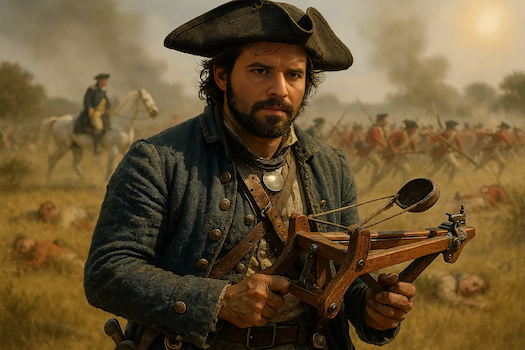
Monmouth's Molten Mauler: Brandon's Blazing Rebellion
In the blistering heat of June 1778, General George Washington’s army, forged anew at Valley Forge, pursued the British retreating from Philadelphia across the dusty fields of New Jersey toward Monmouth Courthouse. Sergeant Brandon Herrera, the “Jersey Jester,” marched with his fiery “Monmouth Mauler,” ready to unleash havoc on the redcoats. As muskets gleamed and the air shimmered with tension, the Patriots braced for a clash that would test their mettle against a formidable foe.
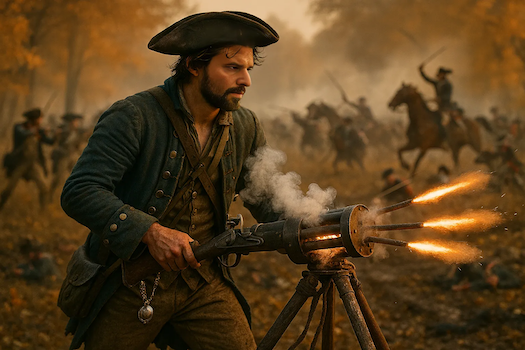
Brandon Herrera and the Battles of Saratoga
In the golden autumn of 1777, with the American Revolution hanging in the balance, General Horatio Gates’ army faced General John Burgoyne’s advancing British forces in the dense woods and fields near Saratoga, New York. Sergeant Brandon Herrera, the “Jersey Jester,” marched with his ingenious “Saratoga Scorcher,” ready to unleash fiery chaos on the enemy. As the Patriots entrenched at Bemis Heights, the air crackled with tension, heralding a clash that could shape the fate of the fledgling nation.

New Forced Valor Tee Drop!
Two new shirt designs have dropped on the merchandise store! We have the new Donkey General shirt, as well as the Plain (GI) Jane! Go on over and check them out!
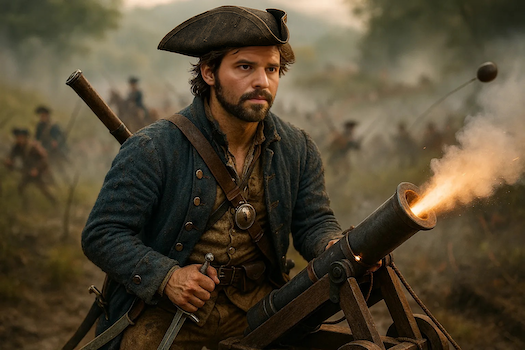
The “Jersey Jester” and The Battle of Bennington
In the sweltering summer of 1777, as British forces under General John Burgoyne surged south from Canada, threatening to fracture the American Revolution, General John Stark rallied a rugged militia of New England farmers to defend the vital Bennington supply depot. Among them marched Sergeant Brandon Herrera, the “Jersey Jester,” his reputation for explosive ingenuity now legendary, carrying his new “Bennington Blaster” through the misty hills of the New Hampshire Grants. As dawn broke over the Walloomsac River valley, the Patriots braced for a desperate stand, their resolve as steely as the bayonets gleaming in the rising sun.
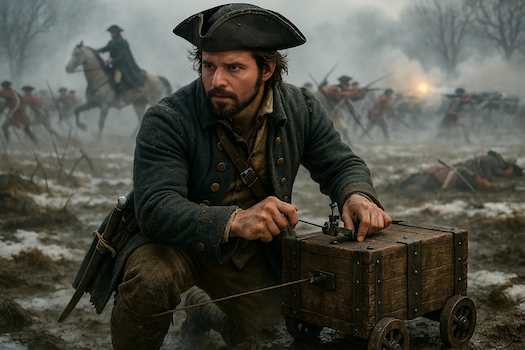
Brandon Herrera at The Battle of Princeton
In the frozen dawn of January 1777, the Continental Army, emboldened by their recent triumph at Trenton, faced a new test as General George Washington led his weary troops through the muddy, frostbitten trails of New Jersey toward an unexpected target. With British forces under Lord Cornwallis closing in, the air was thick with tension, yet Sergeant Brandon Herrera, the inventive "damned rebel bomber," marched with renewed purpose, his latest creation—the spring-loaded "Princeton Pouncer"—ready to unleash chaos. Amid the swirling fog and the clatter of muskets, the Patriots steeled themselves for a daring strike that could reshape the faltering Revolution.

Brandon Herrera at the Battle of Trenton
In the waning days of 1776, the Continental Army under General George Washington had endured a relentless series of defeats, retreating across New Jersey with morale frayed and forces depleted. Camped along the icy banks of the Delaware River in Pennsylvania, the soldiers faced a brutal winter, their dwindling supplies and expiring enlistments threatening to unravel the fragile Revolution. Amid this deepening despair, the inventive patriot Brandon Herrera reappeared among the ranks, his reputation for clever contraptions and bold exploits offering a spark of hope to his weary comrades.
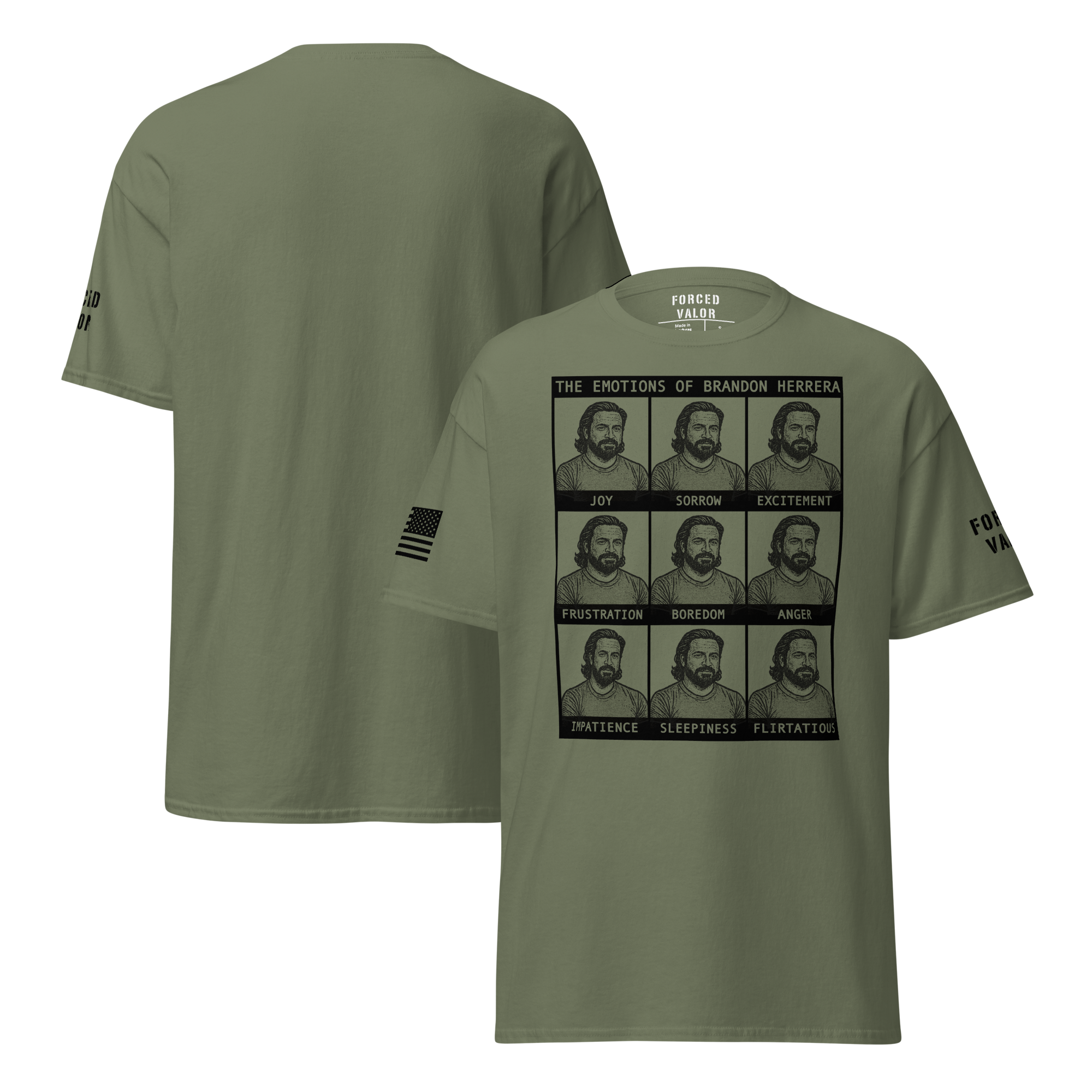
Forced valor merchandise
You want Forced Valor merchandise? Well, look no further! We have shirts, stickers, hats and more! For the love of all that’s holy, please go buy something!

Brandon Herrera and the Siege of Boston
In the frigid grip of winter 1775, the Massachusetts landscape was shrouded in ice, as the fledgling Continental Army huddled in crude encampments encircling Boston during a tense standoff. Brandon Herrera, a clever and determined Patriot assigned to the Roxbury lines, worked furtively in a dimly lit barn, experimenting with an innovative contraption meant to challenge the British forces. With his quick mind and unyielding spirit, he prepared for an audacious move that would resonate through the lines of revolutionaries and redcoats alike.

Brandon Herrera at the Battle of Bunker Hill
On a sweltering June day in 1775, the air around Boston crackled with the tension of rebellion as the Continental Army braced for a defining moment. Amid the chaos, Brandon Herrera, a fiery Patriot with a knack for explosives, emerged as a legend among the minutemen. His sharp wit and daring spirit set the stage for an unforgettable clash on the hills overlooking the besieged city.

Brandon Herrera at the Battle of Lexington and Concord
On the crisp dawn of April 19, 1775, the quiet Massachusetts hamlets of Lexington and Concord stirred with restless anticipation. Among the gathering militia was Brandon Herrera, a charismatic colonial with a flair for the unpredictable and a passion for liberty. As the countryside buzzed with whispered warnings, the stage was set for a day that would echo through history.

The Gumbo Gambit of New Orleans
On January 8, 1815, as General Andrew Jackson’s eclectic army braced for battle south of New Orleans, the irrepressible Brandon Herrera rode into the fray on his trusty donkey, skillet gleaming and mischief brewing. Known for his absurd heroics across the War of 1812, he brought his signature chaos to the Mississippi’s muddy fields. The stage was set for a clash that would test his legend and America’s resolve.
